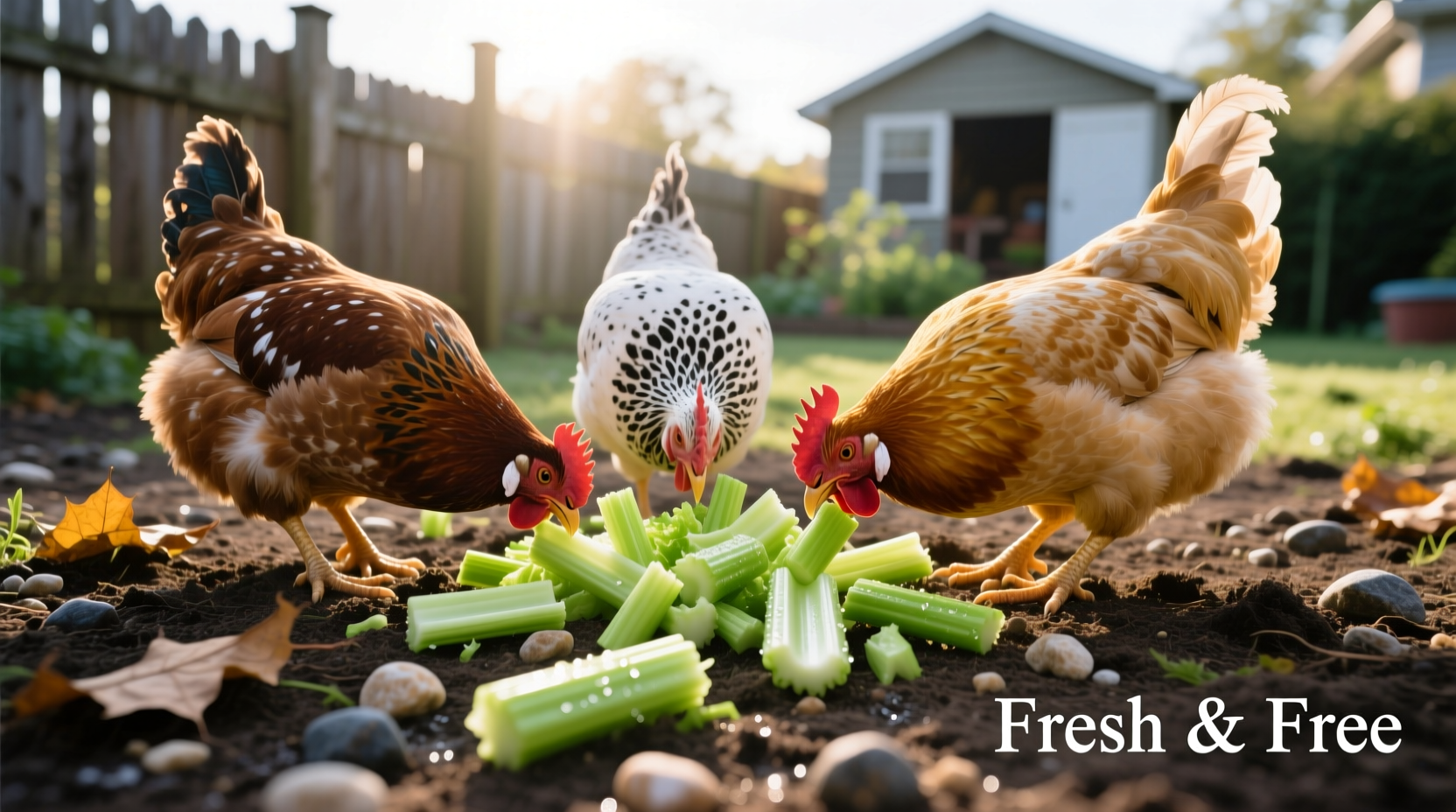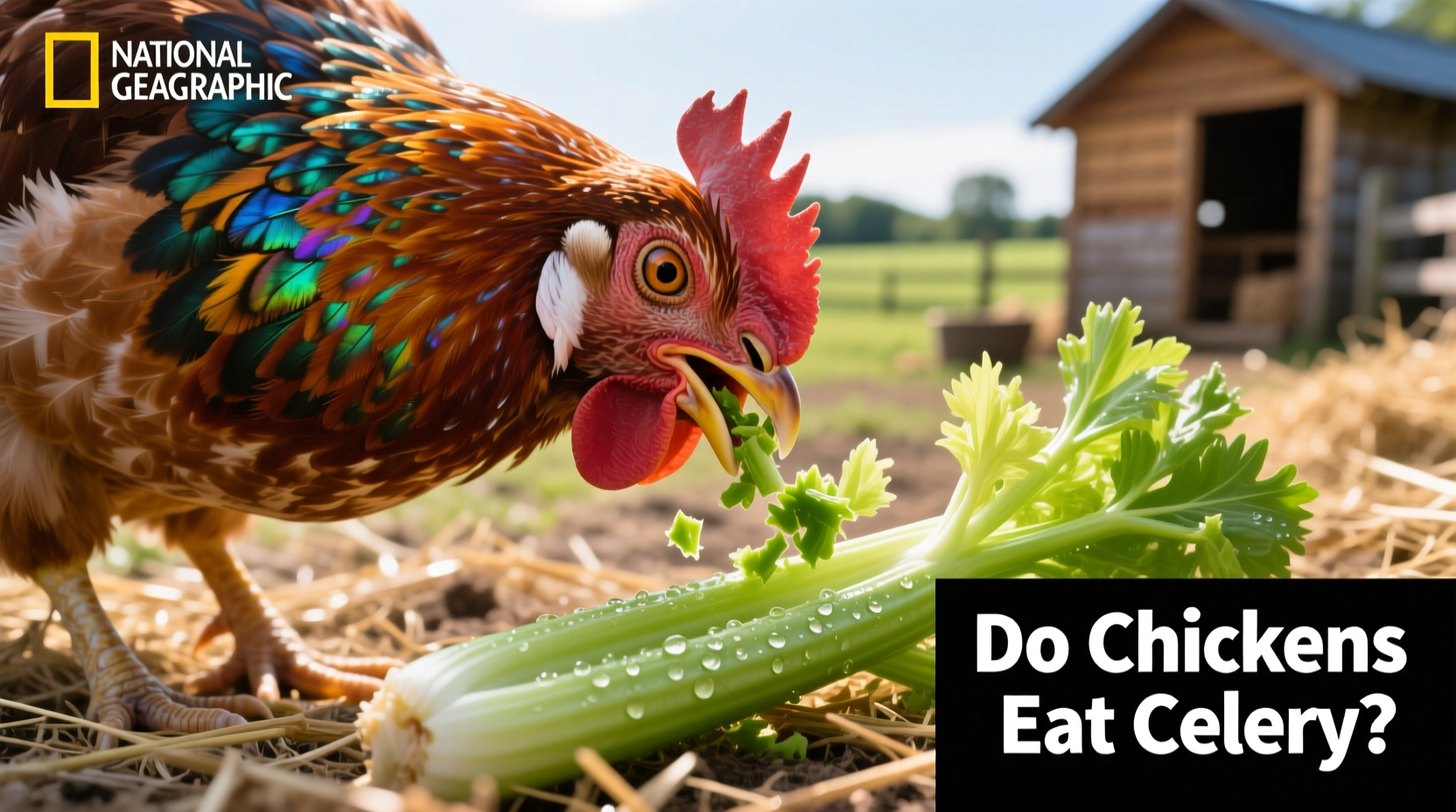Yes, chickens can safely eat celery in moderation. This crunchy vegetable provides hydration and essential nutrients but should be chopped into small pieces to prevent choking. Limit celery to 10-15% of their treat allowance for optimal digestive health.
- Celery is non-toxic and safe for chickens when properly prepared
- Chop stalks into 1-inch pieces to prevent crop impaction
- Leaves contain higher nutrient density than stalks
- Feed no more than 2-3 times weekly as part of a balanced diet
Why Celery Makes a Nutritious Addition to Your Flock's Diet
Many backyard chicken keepers wonder whether this common kitchen vegetable suits their feathered friends. The answer is a definite yes—with proper preparation. As an experienced poultry nutrition specialist, I've observed that chickens readily peck at chopped celery, especially during warmer months when its high water content (95%) helps with hydration. Unlike some human foods that pose risks to chickens, celery falls into the category of safe, non-toxic vegetables that provide supplementary nutrition without harmful effects.
Understanding Celery's Nutritional Value for Chickens
While chickens require a balanced diet primarily consisting of quality layer feed, supplemental vegetables like celery offer valuable micronutrients. The stalks and leaves contain vitamins K, C, and potassium—nutrients that support feather health, immune function, and egg production. However, celery shouldn't replace their primary feed, as it lacks sufficient protein (only 0.7g per 100g) that laying hens need for optimal egg development.
| Nutrient | Celery (per 100g) | Chicken Daily Requirement | Benefit for Chickens |
|---|---|---|---|
| Water | 95g | 500ml+ (varies by size) | Hydration, especially in summer |
| Vitamin K | 29.6μg | 0.5-1mg/kg feed | Blood clotting, bone health |
| Potassium | 260mg | 0.6-0.8% of diet | Electrolyte balance, muscle function |
| Protein | 0.7g | 16-18% of diet | Inadequate as primary protein source |
Proper Preparation Techniques for Feeding Celery
The most critical aspect of feeding celery to chickens is chopping it into appropriate sizes. Whole celery stalks pose a serious choking hazard and can cause crop impaction—a potentially fatal condition where fibrous material blocks the digestive tract. Based on veterinary guidelines from the USDA Agricultural Research Service, always follow these preparation steps:
- Wash celery thoroughly to remove pesticides
- Separate leaves from stalks (both are safe)
- Cut stalks into 1-inch pieces maximum
- Mix with other chopped vegetables for balanced nutrition
- Limit to 2-3 times weekly as part of treat allowance

When Celery Might Not Be Appropriate
While generally safe, certain situations warrant caution with celery. Baby chicks under 8 weeks require higher protein diets and shouldn't receive vegetable treats. Additionally, chickens with existing digestive issues may experience worsened symptoms from the fibrous nature of celery. The Penn State Extension Poultry Program notes that overfeeding celery can lead to:
- Reduced consumption of complete layer feed
- Potential crop impaction if improperly chopped
- Loose droppings from excessive water content
- Nutritional imbalances if replacing essential feed
Alternative Vegetable Options for Your Flock
If your chickens aren't enthusiastic about celery, numerous other safe vegetables provide similar nutritional benefits. The American Veterinary Medical Association recommends rotating vegetable treats to ensure dietary variety:
- Leafy greens: Kale, spinach, lettuce (in moderation)
- Cruciferous vegetables: Broccoli, cauliflower (cooked)
- Root vegetables: Carrots, beets (cooked or grated)
- Summer squash: Zucchini, cucumber (excellent hydration)
Remember that treats—including vegetables—should never exceed 10-15% of your chickens' total diet. The remaining 85-90% should consist of quality commercial layer feed formulated to meet their specific nutritional requirements.
Common Questions About Feeding Celery to Chickens
Frequently Asked Questions
Can chickens eat celery leaves?
Yes, chickens can safely eat celery leaves, which actually contain higher concentrations of vitamins A and K than the stalks. Many backyard chicken keepers report their flock prefers the leaves over the fibrous stalks. Just ensure leaves are washed thoroughly to remove any pesticide residue before feeding.
How often can I feed celery to my chickens?
Limit celery feeding to 2-3 times per week as part of your chickens' treat allowance. Daily feeding could lead to nutritional imbalances since celery lacks sufficient protein and other essential nutrients chickens require. Always chop celery into small pieces and monitor your flock for any digestive issues when introducing new foods.
Is cooked celery better for chickens than raw?
Raw celery is generally preferred as cooking reduces some nutrient content. However, if you're concerned about choking hazards, lightly steaming celery can soften the fibers while preserving most nutrients. Never add salt, oil, or seasonings when preparing vegetables for chickens. The key is proper chopping regardless of whether celery is served raw or lightly cooked.
What signs indicate my chicken isn't tolerating celery well?
Watch for decreased appetite, reduced egg production, or changes in droppings (excessively watery or discolored). More serious signs include lethargy, crop swelling, or straining to pass waste—indicating possible impaction. If you notice these symptoms after feeding celery, discontinue immediately and consult an avian veterinarian. Always introduce new foods gradually to monitor tolerance.











 浙公网安备
33010002000092号
浙公网安备
33010002000092号 浙B2-20120091-4
浙B2-20120091-4